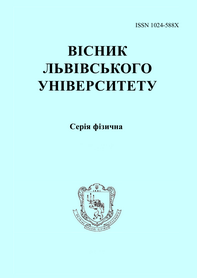DOI: https://doi.org/10.30970/vph.56.2019.65
Superadditive model of the ideal Fermi-gas near absolute zero
B. Sobko, A. Rovenchak

| Visnyk of the Lviv University. Series Physics
56 (2019) ñ. 65-75
DOI: https://doi.org/10.30970/vph.56.2019.65 Superadditive model of the ideal Fermi-gas near absolute zeroB. Sobko, A. Rovenchak |  |
Nonadditive statistics can be used to describe various systems, for instance, in fractional structures and systems with long-range interactions. In this paper, we focus on finding the low-temperature limits of thermodynamic functions of a system obeying a nonadditive modification of the Fermi-statistics.
\\
\hspace*{1.6em}
For integrity, we briefly show how the Tsallis entropy is introduced by generalizing classical Boltzmann--Gibbs entropy. In the case of a system, which consists of two subsystems, unlike the additive entropy in the classical sense, the Tsallis entropy satisfies the relation Sq (A + B) = Sq (A) + Sq (B) + (1-q) Sq (A) Sq (B), hence, is a non-additive quantity. For q>1 we have, therefore, Sq (A + B) < Sq (A) + Sq (B), so in this case the Tsallis entropy is called \textit{subadditive}, and for q<1 the respective inequality becomes Sq (A + B)> Sq (A) + Sq (B) , which corresponds to a \textit{superadditive} entropy. It is this case that we will consider in this article.
\\
\hspace*{1.6em}
In the low temperature limit we have obtained the expansion of energy per particle as a series over temperature T as follows: E/N=E0/N+\alpha(q,s)T+\mathcal{O}(T2). The analytical expression for the coefficient \alpha(q, s), which is a factor at T in the energy expansion, is obtained. Here, s is the power in the energy density g(\eps)\sim \epss-1. Note that \alpha(q, s) does not depend on system parameters. Obviously, this factor is nothing but the specific heat of the system in the limit of T\to0.
%\\
%\hspace*{1.6em}
The temperature dependences of the specific heat are calculated for different parameters of nonadditivity q and the power s in the density of states. For all values in the range of q\rm min
References